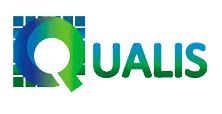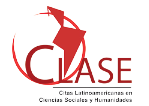Métodos ágiles desde el punto de vista de la información
DOI:
https://doi.org/10.5433/1981-8920.2017v22n3p178Palabras clave:
Métodos Ágiles, Innovación de Procesos, Flujo de Información, Revisión Sistemática de la LiteraturaResumen
Introducción: Desde que Paul M. N. Outlet destacó el término documentación en 1934, proponiendo cómo recoger y organizar el conocimiento del mundo, muchas investigaciones científicas han dirigido sus esfuerzos al estudio de la Ciencia de la Información. Métodos y técnicas han llegado con una visión del mundo desde la perspectiva de la información. Los métodos ágiles siguen esta tendencia. Objetivo: La meta es analizar la relevancia del flujo de información para las organizaciones que adoptan los métodos ágiles, comprendiendo cómo el proceso de innovación va ser influenciado por esta práctica. Metodología: Este es un estudio bibliométrico con los fundamentos de la Revisión Sistemática de la Literatura (RSL). La integración entre la técnica RSL interactuando con la herramienta Summarize es una nueva propuesta metodológica. Resultados: El Scrum aparece con mayor número de publicaciones en SPELL. Los resultados de Google Scholar apuntaban para la importancia de las prácticas y comportamientos de los equipos. En comparación, el repositorio ScienceDirect, factores críticos de éxito en gestión y desarrollo de proyectos de software están resaltados. Conclusiones: Era evidente que los métodos ágiles están siendo utilizados como innovaciones de procesos. Los beneficios y ventajas son evidentes con la presencia interna y externa del flujo de información. Debido a la prevalencia en la literatura, el Scrum merece atención de las firmasDescargas
Citas
ABRAHAMSSON, P. et al. Agile Software Development Methods: review and analysis. VVT Publications. Espoo, Finland: 2002.
AGILEMANIFESTO. Manifesto for Agile Software Development. Disponível em: http://www.agilemanifesto.org/>. Acesso em: 26 fev. 2016.
AMBLER, S. W. Agile Model Driven Development (AMDD): the key to scaling agile software development. Disponível em: http://www.agilemodeling.com/essays/amdd.htm>. Acesso em: 29 abr. 2015.
ASNAWI, A. L.; GRAVELL, A. M.; WILLS, G. B. Empirical Investigation on Agile Methods Usage: Issues Identified from Early Adopters. In: 12th International Conference XP. Madrid, Espanha. 2011, p 192–207.
AZIZYAN, G.; MAGARIAN, M. K.; KAJKO-MATSSON, M. Survey of Agile Tool Usage and Needs. In: AGILE Conference. Salt Lake City, UT, USA: IEEE.2011, p 29-38.
BARRETO, A. A. A questão da informação. Revista São Paulo em Perspectiva, v. 8, n. 4, 1994.
BECK, K. Extreme programming explained: embrace change. Boston: Addison-Wesley, 1999.
BOEHM, B.; TURNER, R. Balancing Agility and Discipline: a guide for the perplexed. Addison-Wesley Professional, 2004.
BOOCH, G.; RUMBAUGH, J.; JACOBSON, I. The Unified Modeling Language User Guide. 2. ed. USA: Addison-Wesley, 2005.
CARVALHO, L. A. C.; BARBOSA, M. W.; SILVA, V. B. Proposta e Avaliação de uma Abordagem Lúdica para o Ensino de Histórias de Usuário e Scrum. Revista de Gestão e Projetos, v. 5, n. 3, p. 44–58, 2014.
CHOO, C. W. Information management for the intelligent organization. Second edi ed. Medford, NJ: Information Today, Inc., 1998.
CHUA, A.Y.K.; YANG, C.C. The Shift towards Multi-Disciplinarity in Information Science. Journal of the American Society for Information Science and Technology, v. 59, n. 13, p. 2156–2170, 2008.
COCCO, L. et al. Simulating Kanban and Scrum vs. Waterfall with System Dynamics. In: 12th International Conference XP. Madrid, Spain. 2011, p 117131.
COCKBURN, A. Agile Software Development: the cooperative game. 2. ed. Boston: Pearson Education, Inc., 2007.
CODIAC, Y.F.L. Ciência da informação. Brasília: Briquet de Lemos, 1996.
CONBOY, K. Agility from first principles: reconstructing the concept of agility in information systems development. Information Systems Research, v. 20, n. 3, p. 329–354, 2009.
CONTADOR, J. L. et al. Sistema Kanban para fábrica de tintas. Revista de Administração e Inovação, v. 2, n. 1, p. 68–77, 2005.
DAVENPORT, T. H.; PRUSAK, L. Conhecimento empresarial. Rio de Janeiro: Campus, 2003.
DOLCI, D. B. Teorizando as práticas dos métodos ágeis no desenvolvimento de software visando ao processo de inovação das empresas. Teoria e Prática em Administração, v. 1, n. 1, p. 74–96, 2011.
DORAIRAJ, S.; NOBLE, J.; MALIK, P. Effective Communication in Distributed Agile Software Development Teams. In: 12th International Conference XP. Madrid, Spain. 2011, p. 102–116.
DORAIRAJ, S.; NOBLE, J.; MALIK, P. Knowledge Management in Distributed Agile Software Development. In: AGILE Conference. Dallas, TX, USA: IEEE. 2012a, p 64-73.
DORAIRAJ, S.; NOBLE, J.; MALIK, P. Understanding Team Dynamics in Distributed Agile Software Development. In: 13th International Conference XP. Malmö, Sweden.2012b, p 47-61.
DORAIRAJ, S.; NOBLE, J.; MALIK, P. Understanding the Importance of Trust in Distributed Agile Projects: A Practical Perspective. In: 11th International Conference XP. Trondheim, Norway. 2010, p 172-177.
FERREIRA, J.; SHARP, H.; ROBINSON, H. Agile Development and User Experience Design Integration as an Ongoing Achievement in Practice. In: AGILE Conference. Dallas, TX, USA: IEEE. 2012, p 11-20.
FERREIRA, J.; SHARP, H.; ROBINSON, H. Values and Assumptions Shaping Agile Development and User Experience Design in Practice. In: International Conference on Agile Software Development XP. 2010, p 178-183.
FOWLER, M. The Agile Manifesto: where it came from and where it may go.Disponível em: https://martinfowler.com/articles/agileStory.html>. Acesso em: 30 set. 2014.
GE, X.; PAIGE, R.F.; MCDERMID, J. An Iterative Approach for Development of SafetyCritical Software and Safety Arguments. In: AGILE Conference. Nashville, TN, USA: IEEE. 2010, p 35-43.
GHANAM, Y.; MAURER, F. Extreme Product Line Engineering-Refactoring for Variability: A Test-Driven Approach. In: 11th International Conference XP. Trondheim, Norway. 2010, p 43-57.
GRAEML, A. R.; CSILLAG, J. M. Customization in the manufacturing industry: survey results of a survey in Southeastern Brazil. Journal of Information Systems and Technology Management, v. 6, n. 3, p. 395–412, 2009.
GUIMARAES, L. F. A.; FALSARELLA, O. M. Uma análise da metodologia JustIn-Time e do sistema Kanban de produção sob o enfoque da ciência da informação. Perspectivas em Ciência da Informação, v. 13, n. 2, 2008.
HIGHSMITH, J. Retiring Lifecycle Dinosaurs: using adaptive software development to meet the challenges of a high-speed, and high-change environment. Disponível em: http://www.adaptativesd.com/articles/dinosaurs.pdf>. Acesso em: 29 abr. 2015.
HODA, R.; NOBLE, J.; MARSHALL, S. Agile Undercover: When Customers Don’t Collaborate. In: 11th International Conference XP. Trondheim, Norway. 2010, p 73-87.
HODA, R.; NOBLE, J.; MARSHALL, S. Supporting Self-organizing Agile TeamsWhat’s Senior Management Got to Do with It? In: 12th International Conference XP. Madrid, Spain. 2011, p 1-4.
JABBOUR, A. B. L. S. et al. Análise da relação entre manufatura enxuta e desempenho operacional de empresas do setor automotivo no Brasil. Revista de Administração, v. 48, n. 4, p. 843–856, 2013.
JUNIOR, M. L.; FILHO, M. G. Evolução e avaliação da utilização do Sistema Kanban em empresas paulistas. Revista de Administração, v. 44, n. 4, p. 380–395, 2009.
KAJKO-MATTSSON, M.; AZIZYAN, G.; MAGARIAN, M. K. Classes of Distributed Agile Development Problems. In: AGILE Conference. Nashville, TN, USA: IEEE. 2010, p 51-58.
KITCHENHAM, B. Procedures for performing Systematic Literature Reviews. Keele University Technical Report TR/SE-0401, ISSN:1353-7776, 2004.
KRUCHTEN, P. Introduction au Rational Unified Process. Editions Eyrolles, 1999.
KURAPATI, N.; MANYAM, V. S. C.; PETERSEN, K. Agile Software Development Practice Adoption Survey. In: 13th International Conference on Agile Software Development XP. 2012, p 16-30.
LARMAN, C. Agile and Iterative Development: a manager’s guide. Boston: Addison-Wesley Professional, 2003.
LAUDON, K. C.; LAUDON, J. P. Sistemas de informações gerenciais. 11. ed. São Paulo: Pearson Education do Brasil, 2014.
LI, J et al. Analysis of Federated and Global Scheduling for Parallel Real-Time Tasks. In: Euromicro Conference on Real-Time Systems (ECRTS). Madrid, Espanha: IEEE. 2014, p.85-96.
LITTELL, J. H.; CORCORAN, J.; PILLAI, V. Systematic reviews and metaanalysis. New York: Oxford University Press, 2008.
MNKANDLA, E. A Selection Framework for Agile Methodology Practices: a family of methodologies approach. Johannesburg: University of The Witwatersrand, 2008. 247 f. Tese de Doctor of Philosophy - Faculty of Engineering and the Built Environment, University of The Witwatersrand, Johannesburg, 2008.
NEGREIRO, M.; BARBOSA, W. T. O problema de alocação de recursos e seleção de múltiplos projetos de TI. Revista de Gestão e Projetos, v. 4, n. 2, 2013.
NONAKA, I.; TAKEUCHI, H. The knowledge-creating company: how japanese companies create the dynamics of innovation. Oxford: Oxford University Press, 1995.
OECD. Oslo Manual: guidelines for collecting and interpreting innovation data.3 ed. Paris: Author, 2005.
PALMER, S. R.; FELSING, J. M. A Practical Guide to Feature-driven Development. Prentice Hall PTR, 2002.
PEETERS, S. Applying Lean Thinking to Software Development. InfoQueue, Disponível em: https://www.infoq.com/articles/applying-lean-thinking-tosoftware-development>. Acesso em: 4 mar. 2016.
PRESSMAN, R. S. Engenharia de Software: uma abordagem profissional. 7 ed. Porto Alegre: Bookman, 2006.
PRIES-HEJE, L.; PRIES-HEJE, J. Why Scrum Works: A Case Study from an Agile Distributed Project in Denmark and India. In: AGILE Conference. Salt Lake City, UT, USA: IEEE. 2011, p 20-28.
SARACEVIC, T. Information Science. Journal of the American Society for Information Science, v. 50, n. 12, p. 1051–1063, 1999.
SCHWABER, K. Scrum Development Process. In: SUTHERLAND J., CASANAVE C., MILLER J., PATEL P., HOLLOWELL G. (Orgs.). Business Object Design and Implementation. London: Springer, 1997.
SCHWABER, K.; BEEDLE, M. Agile Software Development with Scrum. 1 ed. Upper Saddle River, NJ: Pearson, 2001.
SCRUMSTUDY. A Guide to the SCRUM Body of Knowledge (SBOK GUIDE). Phoenix: VMEdu Inc., 2013.
SELLITTO, M. A.; BORCHARDT, M.; PEREIRA, G. M. Assessing the degree of promptness of a service industry to adopt lean thinking. Revista Eletrônica de Administração, v. 9, n. 6, p. 1–20, 2003.
SENAPATHI, M.; SRINIVASAN, A. Understanding Post-Adoptive Agile Usage-An Exploratory Cross-Case Analysis. In: AGILE Conference. Salt Lake City, UT, USA: IEEE. 2011, p 117-126.
SILVA, R. E.; NETO, J. S. Contratação do desenvolvimento ágil de software na administração pública federal: riscos e ações mitigadoras. Revista do Serviço Público, v. 66, n. 1, p. 97–120, 2015.
SILVA, T.S. et al. User-Centered Design and Agile Methods: A Systematic Review. In: AGILE Conference. Salt Lake City, UT, USA: IEEE. 2011, p 7786.
SOARES, M. D. Metodologias Ágeis Extreme Programming e Scrum para o desenvolvimento de software. Revista Eletrônica de Sistemas de Informação, v. 3, n. 1, p. 1–8, 2004.
STAPEL, K. et al. Towards Understanding Communication Structure in Pair Programming. In: International Conference on Agile Software Development XP. 2010, p.117-131.
STAPLETON, J. DSDM, Dynamic Systems Development Method: the method in practice. Cambridge, Reino Unido: Addison-Wesley, 1997.
STETTINA, C. J.; HEIJSTEK, W.; FAEGRI, T. E. Documentation Work in Agile Teams: The Role of Documentation Formalism in Achieving a Sustainable Practice. In: AGILE Conference. Dallas, TX, USA: IEEE. 2012, p 31-40.
STEVENSON, W. J. Operations management. 10 ed. New York: MacGraw-Hill, 2009.
SUTHERLAND, J. Business Object Design and Implementation Workshop. In: 10th Annual Conference on Object-oriented Programming Systems, Languages, and Applications. Austin, TX, USA. 1995, p 170-175.
TAKEUCHI, H.; NONAKA, I. The new new product development game. Harvard Business Review, p. 137–147, 1986.
TERLIZZI, M. A.; BIANCOLINO, C. A. Projeto de Software no setor bancário: Scrum ou Modelo V. Tecnologias de Administração e Contabilidade, v. 4, n. 1, p. 46–58, 2014.
TOOLS4NOOBS. Online summarize tool. Disponível em: https://www.tools4noobs.com/summarize/>. Acesso em: 3 dez. 2015.
VALLERÃO, A. G.; ROSES, L. K. Monitoramento e controle de projetos de desenvolvimento de software com o Scrum: avaliação da produção científica. Revista de Gestão e Projetos, v. 4, n. 2, 2013.
VITORINO, C. M.; TERRA, L. D. B. The implementation of MRP II in two Brazilian industries. Revista Economia & Gestão, v. 2, n. 4–5, p. 96–105, 2002.
WANG, X. The Combination of Agile and Lean in Software Development: An Experience Report Analysis. In: AGILE Conference. Salt Lake City, UT, USA: IEEE. 2011, p 1-9.
WILLIAMS, L.; RUBIN, K.; COHN, M. Driving Process Improvement via Comparative Agility Assessment. In: AGILE Conference. Nashville, TN, USA: IEEE. 2010, p 3-10.
Descargas
Publicado
Cómo citar
Número
Sección
Licencia
A revista se reserva o direito de efetuar, nos originais, alterações de ordem normativa, ortográfica e gramatical, com vistas a manter o padrão culto da língua e a credibilidade do veículo. Respeitará, no entanto, o estilo de escrever dos autores. Alterações, correções ou sugestões de ordem conceitual serão encaminhadas aos autores, quando necessário.
O conteúdo dos textos e a citação e uso de imagens submetidas são de inteira responsabilidade dos autores.
Em todas as citações posteriores, deverá ser consignada a fonte original de publicação, no caso a Informação & Informação.














